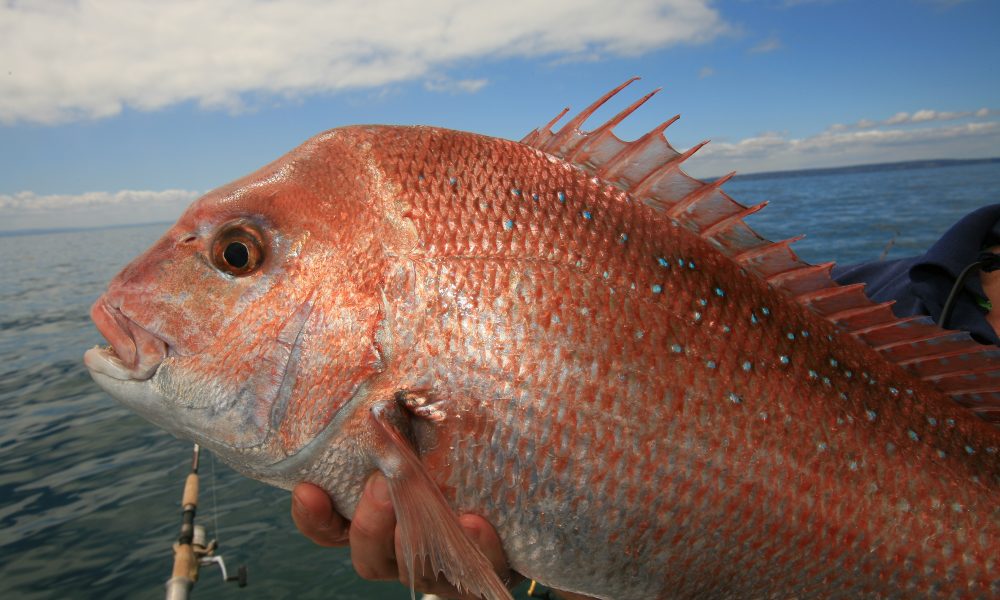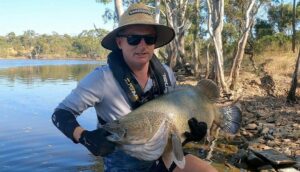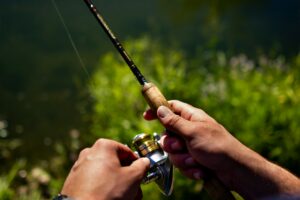
Fishing Rules
Victoria’s snapper fishery has arguably never been better. The spawning aggregations in Port Phillip Bay and elsewhere in the state have been massive in recent seasons. Multiple hook ups are common when a feeding school is located. This has led to situations where those targeting snapper have caught their bag limit of 3 snapper per person over 40cm in a matter of minutes and are then faced with something of a quandary.
If a full day’s fishing had been planned, many fishers are reluctant to leave if the bag limit has been reached quickly, preferring to continue to catch and release snapper. However, there are a number of identifiable causes of increased mortality of released snapper.
If a full day’s fishing had been planned, many fishers are reluctant to leave if the bag limit has been reached quickly, preferring to continue to catch and release snapper. However, there are a number of identifiable causes of increased mortality of released snapper.
THE RISKS
- The first of these is the risk of deep hooking a snapper with conventional “J” hooks. This situation frequently arises when snapper are feeding aggressively and particularly with soft baits such as pilchards or squid. Deep hooking is where the hooks are set in the gills or the gut of the snapper. With typical bait rigs using two beak hooks in the 4/0 to 8/0 range of sizes, this can cause significant trauma with the odds of a successful release being much smaller.
- The second cause of mortality and injury is barotrauma. There is scientific evidence in snapper that barotrauma occurs when they are captured from water depths as shallow as 11m. As depth increases the scope of injury and trauma in the snapper also increases. Apart from affecting the fish so that it is injured and could die, snapper captured in deep water may sustain damage which affects their ability to breed.
- The third issue is how much the fish is handled during the release process. Handling the snapper while de-hooking, laying on hot decks and the like all add to the odds that the fish will not be successfully released to fight again another day.
- The fourth issue is exposing the fish to air immediately after the fight to bring it to the boat. This will further decrease the chances of the fish’s survival.
Threats and Management Issues
FISH FOR THE FUTURE
Responsible recreational fishers do not want to see such a waste of the snapper resource occurring and therefore VRFish plans to create and roll out an education and information campaign for recreational fishers to inform them of their options to minimise the mortality of released fish. Apart from dealing with the prime causes of mortality identified above, there are a number of options to avoid mortality of released snapper as follows:
- The first option is to simply cease fishing for snapper over 40cm once the bag limit has been reached. The crew can either go home early or target other species or smaller snapper in shallower water.
- The second option is not to “bag” fish from the outset of the fishing session when a hot bite is anticipated. If all healthy fish caught in up to 11 metres of water are released at boat side and if only deep hooked fish are retained, this can provide hours of conventional bait fishing without requiring the release of any fish that are at an elevated risk of mortality.
- The third option is to fish only with lures such as soft plastics in shallower waters which rarely (if ever) are deep hooked.
- Remember high-grading of fish is illegal. High-grading of fish involves a person who has caught and retained his/her catch limit of legal size fish, who then continues to catch more of that species, subsequently discarding the previously caught ones, dead or alive. This is an offence under 92/95 s.68A(3)(b) of the Fisheries Act. A person must not – take or have in their possession more fish than the catch limit for that species of fish. Fish caught that are retained in a live-well, catch bag, esky, bucket, or any other container count towards your bag limit
In addition to these overarching options, there are ways to minimise the trauma effects that are identified above as follows:
- Specific fishing options to minimise deep hooking when snapper fishing
If bait fishing, one of the best options to avoid the trauma associated with deep hooking is to use circle hooks. Inline circle hooks are the most effective at securing almost 100% jaw hook sets. Circle hooks can be used with conventional running rigs or paternoster rigs and almost invariably end up with a hook set in the jaw of the snapper. Such a hook set sees the hook readily removed with pliers or other de-hooking devices. Circle hooks have become very popular in recent seasons in pre – tied rigs such as snapper snatchers. Fishing these baited with tight lines gives a very high rate of jaw hook sets and minimum deep hook trauma. - When bait fishing, tight lines such as paternoster rigs with heavy sinkers will minimise deep hooking with any sort of hook
Lure fishing for snapper is increasing in popularity. Lure fishing brings typically hard strikes on a moving lure with a tight line, so the risk of deep hooking is inherently small. Soft plastics, deep divers and various other sinking lure types can be very successful on snapper with a negligible risk of deep hooking. Use smaller and finer gauge carbon steel hooks to achieve mouth hook sets in snapper. Replace trebles with single hooks appropriate to the lure action and line class. Even with this adaptation the tough dentures of snapper will see numbers of fish not being properly hooked up, particularly when fishing with lighter lines. - Options to minimise the risk of barotrauma
An obvious way to minimise this risk is to fish in water of less than 11 metres. This is also beneficial because the experience of catching a decent snapper in shallow water is much more fun than in deep water anyway. The initial run and fight of the fish is much more direct due to the reduction in stretch of the line. Release weights have been successfully applied to return the fish quickly to the original depth. However, such a fish will have been affected by barotrauma. The only effective way to prevent barotrauma is to fish shallow. - Options to minimise the risk of handling the fish
Ideally a fish being returned to the water should not be handled at all. If possible the fish should also not be removed from the water either. For a lip or mouth hooked fish, a pair of pliers or other de hooking device should be used while leaning over the side of the boat. If the hook cannot be readily dislodged using this method, it is preferable to cut the line. Use light gauge high carbon steel hooks as these will quickly corrode and fall from the fish. Avoid the use of stainless steel hooks at all times.
Another option is to crush the hook barbs down with pliers or fish with barbless hooks. This will ease the release process and also adds a challenge in landing the fish as constant pressure is needed to maintain the hook up.
If the fish must be handled, use a wet towel or at least wet hands to minimise harm to the fish and avoid placing the fish on hot surfaces. Always support the fish if taking a photo and do not suspend it from the head using lip grips or similar.
If Victoria’s snapper fishers adopt these options and techniques the unintended mortality of released snapper can be minimised or even eliminated. While this guide has been prepared with emphasis on the Port Phillip Bay fishery, most of the options and techniques are also applicable to other waters and indeed other species.






